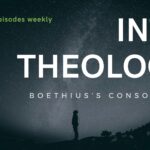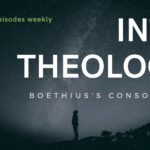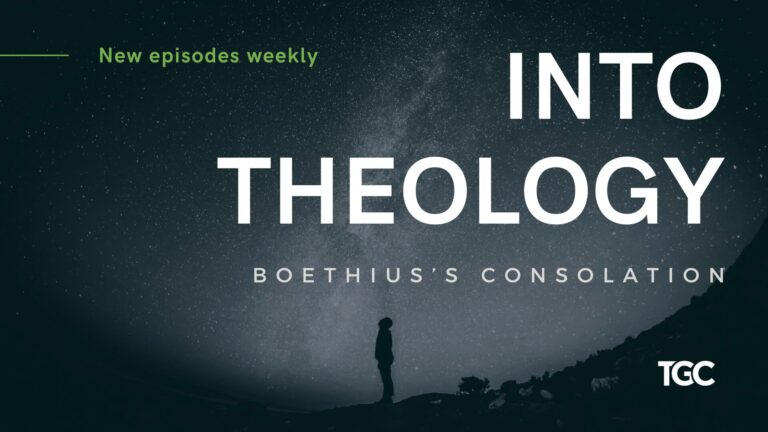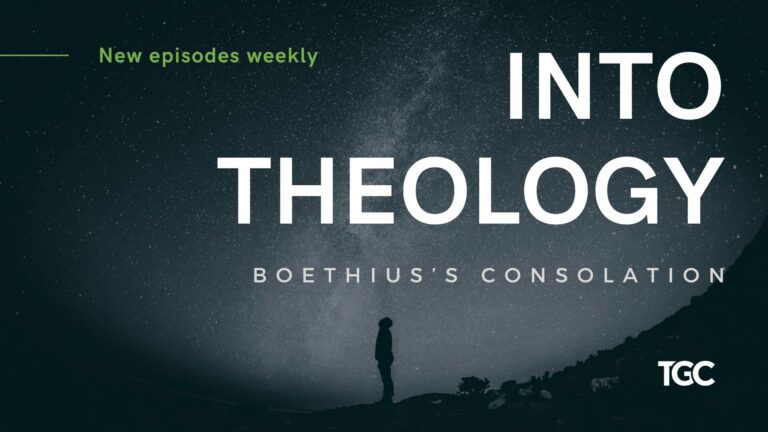Athanasius of Alexandria (d. AD 373) stood firm in the Scriptures by affirming the divinity of the Father and Son. Others followed the theological trajectory set out by the priest Arius (AD 256–336), who said the Father created the Son. For the Arians, the Son was created before all beings. And with him as a sort of instrument, the Father created the universe.
That would not do.
Athanasius remained steadfast in his conviction that the Son was truly divine. He was not simply the greatest of created beings; he was the proper Word of the Father. He was consubstantial with the Father, of the same essence. He was divine.
Athanasius did not come to these conclusions through some esoteric retreat of the mind. He read the Bible and reflected on what it said. He was a pastor, a theologian. He knew the book. And he can still teach us how to know the Bible so that we can withstand error and come to greater knowledge of the One who saved us and loves even now: the triune God.
Here are three ways that Athanasius can help us read our Bibles today.
First, treat the Bible as Holy.
Athanasius knew that any church tradition or teaching must harmonize with Scripture because of the unique place that holy Scripture plays in the life of the church. Athanasius can accordingly talk about the flawless writing of Paul (Serapion 1.10.4). When writing against those who denied the divinity of the Holy Spirit, he tells them to accept what it is written (1.17.5). He also warns them against using invented words that do not appear in Scripture (1.17.6).
His point is not that one can never use a non-biblical word, but that we should be content to simply affirm what the Bible says because it is true. If the Bible uses the terms Father, Son, and Spirit, then we should use these words to describe God. For example, he criticizes the Arian term “Uncreated” as a name for the Father (Arians I.34.2). He takes Matthew 28:19 as normative for our God-talk. We are baptized into the name of the Father, Son, and Spirit (I.34.4)
The most powerful evidence of Athanasius’ approach to the Bible is what he does. He repeatedly quotes and interprets the Bible to show what it says and means. There is no sense that any other authority but the Bible can adjudicate the truthfulness of doctrine. Scripture provides the uniquely authoritative source of doctrine.
So a first rule is to treat the Bible as holy.
Second, read the Bible in context.
When Athanasius confronted an Arian interpretation of Hebrews 3:2, “faithful to him who made him,” Athanasius responded by saying: read the context. In this case, he cites Hebrews 2:14–3:2 to show that the passage’s context concerns Jesus’s high priesthood (Arians II.8.5–6).
The point is that “made him” refers to his incarnational role as high priest (II.8.1, 3; 9.3). Most modern translations agree and translate “made” as “appoint.” Athanasius also cites various texts across Scripture to show that the word “made” refers not just to the creation of some thing or person (2.4.4–8). Hence, just because the word “made” appears does not require it means that God created the Son!
In Athanasius’s approach to interpretation, the sequence of the text mattered a great deal. It should. In Hebrews, the incarnation of the Lord (Heb 2:14ff) precedes the discussion of Christ being made apostle and high priest (Heb 3:1–2). This notion of sequence plays an important role in Athanasius’s interpretation of Acts 2:26.
In this verse, Peter says, “God has made him both Lord and Christ, this Jesus whom you crucified.” To grasp the verse’s meaning, Athanasius asserts that one must pay attention to the sequence of the text. Since the text adds “this Jesus whom you crucified” to “God made him,” Athanasius concludes that the text refers to Jesus according to his human condition (II.12.2).
Peter does not refer to the essence of God. After all, how it is the body of the man Jesus who was crucified (II.12.2)! Further, Peter in earlier verses speaks of Christ revealing himself to us (Acts 2:22). And besides, Athanasius reasons that Peter talks about Christ for us, that is, in his work of redemption. So even here there is no support for the Arian position.
That we should read the Bible in context according to the text’s own sequence often gets missed when we read biblical verses in isolation. Athanasius reminds how important the Bible in context is for understanding what it means.
Third, pay close attention to what biblical words describe.
Probably the least intuitive but the most important of these three ways that Athanasius teaches us to read Scripture is that we should qualify words by their subjects, not subjects by their words (Arians II.3.2–3). Put another way, words differ in their sense depending on the person or thing described by the words.
What in the world does that mean?
It means that the Bible talks about real people and things. And so when it uses words, we need to relate these words to the things that words speak of. For example, I can say an ant is fast. True enough. But I can also say a cheetah is fast. Or a jet is fast. In each case, the word fast gets qualified by its subject because compared to a jet an ant is quite slow.
This becomes very important when the Bible calls the Son “the only begotten of God,” for example (John 3:18). In human or animal terms, begetting works like this. A male and female have sex. The female conceives. She carries a child and births him in water and blood. Then an infant or calf comes. The infant or calf grows and the process starts again. What complicates matters is that a human father is also the son of someone else. He is father and son at the same time. Any son has the potential to be a father as well.
Should we think of the names Son and Father with the language of “begetting” in the same way? Of course not. No eternal Being conceives or is conceived in time since, well, that Being is eternal! God is not born in water and blood. And the Father remains the Father always, the Son the Son always. The Son does not become the father of the Holy Spirit or any such thing. Whatever else it means to say that the Son is “from the Father” or “begotten of God,” we can understand it only by an analogy and so not fully.
To say the Son is begotten of the Father means something quite different then from saying a human son is begotten of a father. The thing described (God or a human or an animal) qualifies the biblical word “begotten,” not the other way around or else the Son would be born like a calf. And that is absurd and impious to believe.
I used the example of “begotten” but it’s true throughout the whole Bible. Scripture speaks of God’s nostrils smoking, his arm raising, his feet descending to earth as his footstool from heaven, his eyes seeing everything, and so on. Yet God is Spirit (John 4:24). And so these words get qualified by their subject. God’s eyes are not made up of nerves, veins, and matter. God’s eyes by way of metaphor explain that he can see as only God can see: he’s omniscient.
That is not true about people or animals who have eyes. They exist in one place and time; and can see and concentrate one set of objects. God differs not just because he is bigger or more powerful but because he exists in an entirely different mode of being. He made everything, and so he is not made unless we say he made himself. But that’s absurd. So he is utterly unlike us in that (at least) has never begun or been put together out of things. He just is. “I am who I am” (Exod 3:14).
All of this should prevent us from doing what Athanasius accused the Arians of doing: reading human things into God. They used words flatly, which amounts to speaking of cows as we would the Son of God. That logic is absurd, of course. Yet even today, we are tempted to do the same when it comes to human relationships.
We are tempted to read our social life into God. We want the Trinity to be our social program, our model for society and for marriage. It is not. God is not a being among beings like we are. “God is not man” (Num 23:19). We need to read the Bible while knowing who God is and who we are, so that, for example, the Creator-creature distinction helps us to understand the words in the Bible!
Athanasius can teach us much. And these three ways of reading the Bible will all help us better to appreciate God’s word and to understand it rightly.
Image:Unknown authorUnknown author, Public domain, via Wikimedia Commons












